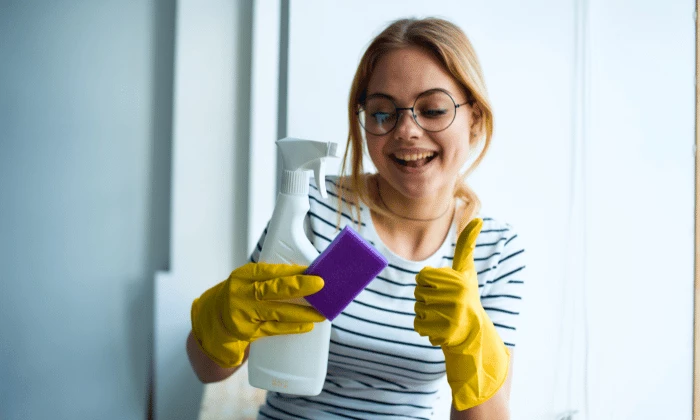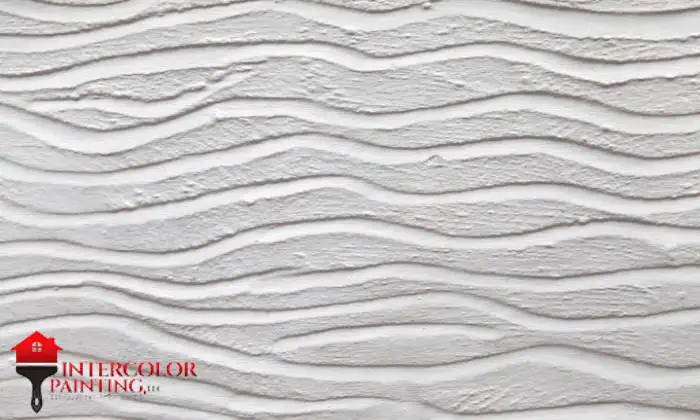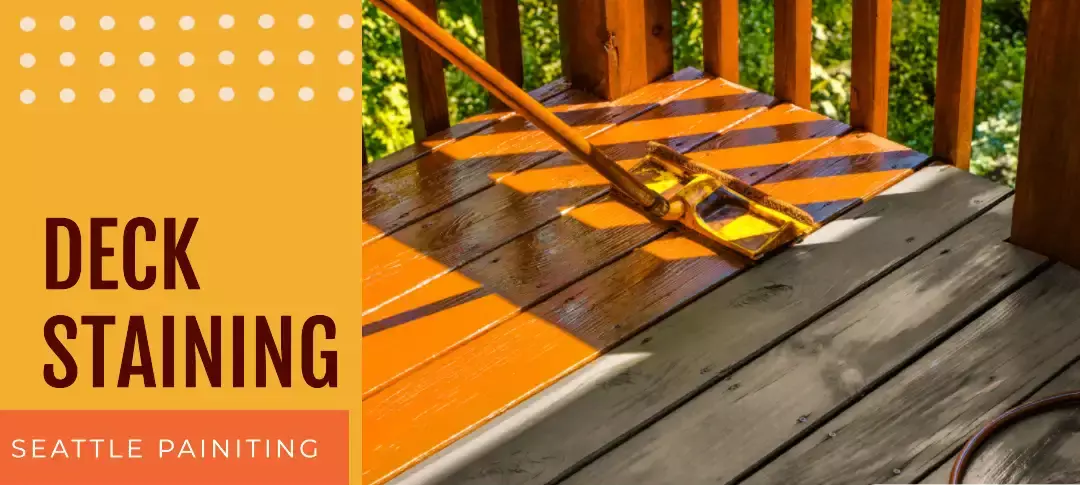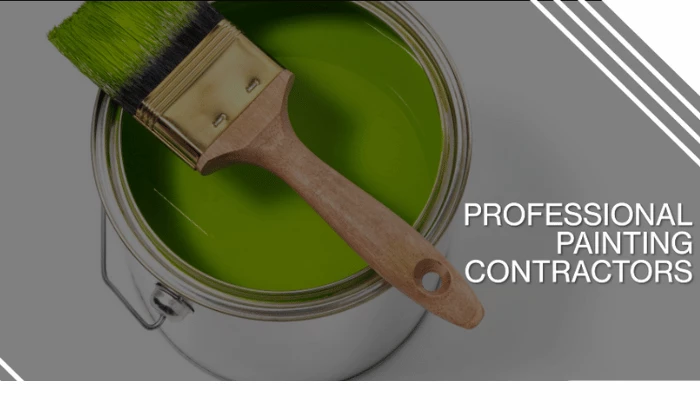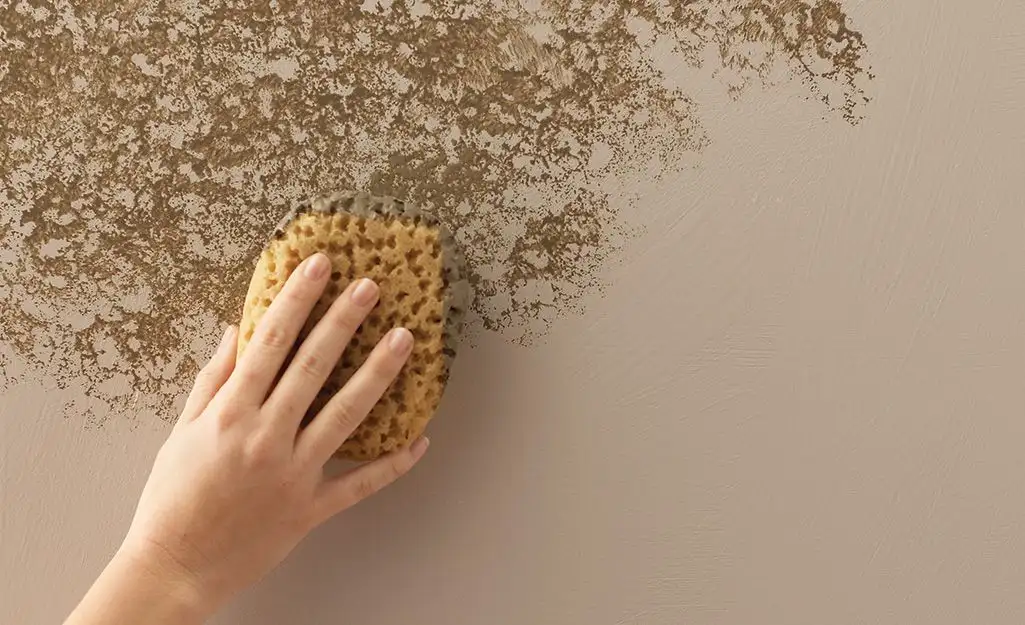In the realm of interior design, wall texture types play a significant role in enhancing the overall aesthetic appeal of homes and offices. Walls, being the largest surface area in any space, have the potential to create a strong visual impact. By incorporating various textures, designers can transform ordinary walls into captivating focal points, elevating the ambiance and adding personality to the environment. Whether it’s a subtle and soothing texture or a bold and dramatic one, the right choice of wall texture can greatly influence the style, mood, and character of a room. We will explore the importance of wall textures in interior design and how they contribute to enhancing the overall visual appeal of residential and commercial spaces. Contact Seattle Painters for more information and wall texture services.
Traditional Wall Texture Types
Smooth Finish
The smooth finish is a classic and versatile wall texture that provides a clean and polished look. It involves applying a smooth layer of plaster or drywall compound to the wall, followed by sanding and priming for a seamless appearance. This texture is popular in contemporary and minimalist designs, as it creates a sleek and understated backdrop for other elements in the space.
Sand Finish
The sand finish texture adds a subtle grainy texture to the walls, resembling the texture of sandpaper. It involves mixing sand with paint or drywall compound and applying it to the wall. The sand particles create a gentle texture that adds dimension and visual interest to the surface. These textures are used in coastal or rustic-themed interiors to evoke a natural and textured feel.
Swirl Finish
Swirl finish is a decorative wall texture that features elegant swirl patterns applied to the walls. This technique is achieved by using a trowel or a texture brush to create swirling strokes in wet joint compound or plaster. Swirl finish adds a touch of sophistication and visual movement to the walls, making it a popular choice for formal living spaces or accent walls.
Skip Trowel Finish
Skip trowel finish is a technique where joint compound or plaster is applied to the wall and then troweled off in a skipping motion, creating a random and uneven texture. This texture provides a subtle rustic or Mediterranean vibe to the walls, adding a sense of depth and character. Skip trowel finish is commonly used in country-style or textured interiors.
Slap Brush Texture
Slap brush texture, also known as crow’s feet or panda paw texture, is achieved by using a thick-bristled brush to slap or stomp on wet joint compound or texture mixture. This technique creates a raised and irregular pattern of peaks and lines, giving the walls a unique and textured appearance. Slap brush texture is often seen in contemporary or eclectic designs, adding a touch of artistic flair to the space.
Orange Peel Texture
Orange peel texture derives its name from its resemblance to the dimpled texture of an orange peel. It is achieved by spraying a mixture of joint compound and water onto the walls using a texture sprayer or by rolling a special roller with a short-nap cover. This texture creates a light and subtle texture that diffuses light and hides minor imperfections, making it a popular choice for both residential and commercial interiors.
Popcorn Texture
Popcorn texture, also known as acoustic or cottage cheese texture, was popular in the mid-20th century. It involves applying a mixture of Styrofoam or other aggregates to the walls, creating a bumpy and textured surface. Popcorn texture was primarily used for acoustic purposes to reduce noise, but it has fallen out of favor in recent years due to its outdated appearance. However, it can still be found in some older homes or retro-themed designs.
These traditional wall texture types offer a wide range of options for adding visual interest and depth to interior spaces, allowing designers to customize the ambiance and create a unique atmosphere. The choice of texture depends on the desired style, theme, and overall design goals of the space.
Textured Wallpaper Options
Embossed Wallpaper
Embossed wallpaper is designed with raised patterns or designs that add depth and texture to the walls. It is created by pressing the wallpaper material against a patterned plate during the manufacturing process. The raised elements can vary from subtle textures to intricate designs, offering a visually appealing and tactile surface. Embossed wallpaper is available in a variety of styles and can be a great option to create a luxurious and sophisticated look in any space.
Flock Wallpaper
Flock wallpaper features a velvety or suede-like texture created by embedding fine fibers onto the wallpaper surface. The fibers are typically made of wool or synthetic materials and create a soft and tactile effect. Flock wallpaper often showcases intricate patterns and designs, adding a touch of elegance and opulence to the walls. It is commonly used in formal or vintage-inspired interiors to create a rich and luxurious ambiance.
Grasscloth Wallpaper
Grasscloth wallpaper is made from natural materials, such as woven grasses, sisal, jute, or bamboo fibers. It offers a textured and organic look to the walls, bringing a sense of nature indoors. The irregularities in the fibers create a unique and rustic texture, making each roll of grasscloth wallpaper slightly different. This type of wallpaper is popular in contemporary and eco-friendly designs, adding warmth and depth to the space.
Metallic Wallpaper
Metallic wallpaper incorporates metallic elements, such as foil, to create a shimmering and reflective surface. It adds a touch of glamour and sophistication to the walls, catching and reflecting light to create an eye-catching effect. Metallic wallpaper can come in various textures, including smooth, embossed, or patterned designs, and is commonly used in modern or contemporary interiors to create a bold statement.
Textured Paintable Wallpaper
Textured paintable wallpaper is a versatile option that allows homeowners to customize the texture and color of their walls. It is typically made from a durable and paintable material, such as embossed paper or fabric. The textured surface provides a three-dimensional effect, while the paintable nature allows for endless color possibilities. This type of wallpaper is ideal for those who want to experiment with different textures and color schemes, as it can be painted over multiple times to achieve the desired look.
Textured wallpapers offer a convenient and stylish way to introduce texture and visual interest to the walls. Whether you prefer a subtle embossed design, a plush velvet-like finish, a natural woven texture, a glamorous metallic sheen, or the versatility of paintable options, textured wallpapers provide a range of choices to suit various design preferences and create a captivating atmosphere in any space.
Contemporary Texture Techniques
Venetian Plaster
Venetian plaster is a technique that originated in Italy and is known for its smooth and polished appearance. It involves applying multiple layers of plaster mixed with marble dust, resulting in a high-gloss finish with a subtle texture. Venetian plaster adds a touch of elegance and sophistication to contemporary interiors, creating a luxurious and timeless look.
Stucco Finish
Stucco finish is a popular wall texture technique that mimics the look of traditional stucco plaster. It involves applying a mixture of cement, sand, and water to the walls, which is then troweled and textured to create a rough and uneven surface. Stucco finish adds a sense of depth and organic charm to contemporary spaces, often seen in Mediterranean or Spanish-inspired designs.
Concrete Texture
Concrete texture is a modern and industrial-inspired wall technique that imitates the raw and rugged appearance of concrete walls. It can be achieved by using concrete-like coatings, textured paint, or even real concrete panels. Concrete texture adds a contemporary and urban vibe to interiors, creating a bold and edgy aesthetic.
Wood Paneling
Wood paneling is a versatile technique that involves covering the walls with wooden panels or planks. It adds warmth, texture, and a natural element to contemporary spaces. Wood paneling can be installed in various styles, such as horizontal, vertical, or diagonal arrangements, offering flexibility in creating different visual effects and patterns.
Brick Texture
Brick texture is a popular choice for contemporary interior design, providing an industrial and rustic look. It can be achieved by using real brick walls or faux brick panels. Brick texture adds character, texture, and a sense of history to contemporary spaces, making it a favored option for lofts, urban apartments, or industrial-style designs.
Geometric Patterns
Geometric patterns are a versatile and creative way to add texture and visual interest to contemporary walls. This technique involves using various materials, such as textured wallpapers, tiles, or paint, to create geometric shapes, lines, or patterns on the walls. Geometric patterns offer a modern and dynamic look, allowing for endless design possibilities to suit different aesthetics.
These contemporary wall texture types and techniques provide a range of options to create visually appealing and textured surfaces in modern interiors. Whether it’s the smooth elegance of Venetian plaster, the rugged charm of stucco, the urban edge of concrete, the natural beauty of wood paneling, the industrial vibe of brick texture, or the creative allure of geometric patterns, these techniques can transform ordinary walls into captivating focal points, enhancing the overall aesthetic appeal of contemporary spaces.
Innovative Wall Texture Ideas
3D Wall Panels
3D wall panels are a unique and contemporary way to add texture and depth to walls. These panels are typically made of materials such as gypsum, wood, or plastic, and feature three-dimensional patterns or designs. They create a visually striking effect by casting shadows and playing with light. 3D wall panels are available in various styles, from abstract geometric patterns to organic shapes, allowing for creative and customizable wall textures.
Reclaimed Materials
Using reclaimed materials for wall textures brings a sense of sustainability and character to a space. Reclaimed wood, bricks, or metal panels can be repurposed and installed on walls, showcasing their natural textures and weathered appearances. This technique adds a rustic and eco-friendly touch, creating a unique and visually interesting feature in both residential and commercial settings.
Natural Stone Cladding
Natural stone cladding involves using thin stone veneers to cover the walls, providing an elegant and earthy texture. The stones can be sourced from materials like slate, granite, or limestone, and are typically cut into thin pieces for easy installation. Natural stone cladding adds a timeless and luxurious appeal to interiors, creating a connection to nature and adding textural depth to the walls.
Textured Tiles
Textured tiles offer a wide range of options to introduce texture and patterns to walls. From embossed tiles with raised designs to textured surfaces that mimic natural materials like wood or stone, these tiles provide an innovative way to add visual interest and tactile sensations to the walls. Textured tiles can be used in combination with other materials, offering versatility and creativity in design.
Mosaic Patterns
Mosaic patterns involve the arrangement of small tiles, glass pieces, or other materials to create intricate and detailed designs on the walls. These patterns can range from geometric shapes and abstract compositions to more traditional or artistic motifs. This technique adds a vibrant and decorative texture to walls, creating a focal point and adding a touch of artistry to the space.
These innovative wall texture types ideas provide creative solutions for adding depth, visual interest, and personality to interior walls. Whether it’s the dramatic effect of 3D wall panels, the charm of reclaimed materials, the elegance of natural stone cladding, the versatility of textured tiles, or the artistic allure of mosaic patterns, these techniques allow for unique and captivating wall textures that enhance the overall aesthetics of any environment.
Choosing the Right Texture
When selecting a wall texture, several factors should be considered to ensure it aligns with the overall design vision, complements existing furniture and decor, suits the lighting conditions, and meets maintenance and durability requirements. Here are the key considerations:
Overall Interior Design Style
The chosen wall texture should harmonize with the overall design style of the space. For example, sleek and smooth finishes are well-suited for contemporary or minimalist designs, while rustic textures like wood paneling or brick cladding complement country or industrial aesthetics. Consider the desired ambiance and style of the room to select a texture that enhances and reinforces the design theme.
Complementing Existing Furniture and Decor
The wall texture types should work in synergy with the existing furniture, artwork, and decor in the space. Consider the colors, patterns, and materials used in the furnishings and accessories. A textured wallpaper or wall panel that complements or contrasts with these elements can create a cohesive and visually appealing composition. Take into account the visual balance and coordination between the textures on the walls and the other elements in the room.
Evaluating Lighting Conditions
Lighting plays main role in how wall textures are perceived. Consider the natural and artificial lighting conditions in the space. Some textures, such as metallic or reflective surfaces, can enhance the play of light and create interesting visual effects. On the other hand, heavily textured surfaces may cast shadows or absorb light, impacting the overall brightness of the room. Assess how the texture interacts with light sources to achieve the desired atmosphere.
Considering Maintenance and Durability
Evaluate the practical aspects of the chosen wall texture, such as its maintenance requirements and durability. Some textures may require regular cleaning or touch-ups to maintain their appearance. Consider the ease of cleaning, resistance to wear and tear, and the longevity of the texture. For high-traffic areas or spaces prone to moisture or stains, opt for textures that are durable and easy to maintain.
By considering the overall interior design style, complementing existing furniture and decor, evaluating lighting conditions, and considering maintenance and durability factors, you can choose the right wall texture that not only enhances the aesthetics of the space but also aligns with practical considerations for long-term satisfaction and enjoyment.
Hiring Professionals for Wall Texture Installation
When it comes to wall texture types and installation, hiring professionals can offer numerous benefits, such as ensuring quality workmanship, saving time and effort, and achieving a polished and professional finish. Here are the key advantages of professional installation and tips for finding reputable contractors:
Benefits of Professional Installation
Expertise and Skill: Professional installers have the necessary knowledge, experience, and skill set to handle various wall texture techniques, ensuring a flawless and well-executed result.
Workmanship: Professionals use proper techniques, tools, and materials to achieve a high-quality and durable wall texture finish that will withstand the test of time.
Time and Effort Saving: Professionals are efficient in completing the installation process, saving you the time and effort required for a DIY project.
Enhanced Aesthetics: With professional installation, you can expect a polished and refined texture that enhances the overall aesthetics of your space.
Finding Reputable Contractors
Recommendations: Seek recommendations from friends, family, or trusted professionals who have recently had wall texture work done. Their firsthand experiences can provide valuable insights.
Online Research: Use online platforms, such as search engines, directories, and review websites, to find reputable contractors in your area. Look for companies with positive reviews and a good reputation.
Local Painters’ Associations: Check local painters’ associations or trade organizations, as they often maintain lists of qualified and reputable contractors.
Referrals from Suppliers: Consult local paint or construction material suppliers for recommendations. They often have connections with reliable professionals in the industry.
Evaluating Portfolios and Reviews
Portfolio: Request portfolios or samples of previous wall texture work from potential contractors. This allows you to assess the quality of their craftsmanship and determine if their style aligns with your preferences.
Reviews and Testimonials: Read online reviews and testimonials from past clients to gain insights into the contractor’s professionalism, reliability, and customer satisfaction levels.
Hiring Seattle Painting Experts
If you’re specifically looking for professionals in Seattle, consider engaging the services of Seattle Painting Experts We are professional with a vast experience in the field. By hiring professionals for wall texture installation, you can enjoy the benefits of their expertise, save time and effort, and achieve a polished and professional result. Take the time to research and find reputable contractors, evaluate their portfolios and reviews, and consider hiring trusted professionals such as Seattle Painting Experts for your wall texture needs.
Conclusion
In conclusion, when it comes to wall texture types and installation, hiring professionals offers numerous benefits, including expertise, quality workmanship, time-saving, and enhanced aesthetics. To find reputable contractors, seek recommendations, conduct online research, check local associations, and consider referrals from suppliers. Evaluating portfolios and reading reviews helps assess the contractor’s skills and customer satisfaction. For those in Seattle, Seattle Painting Experts and other trusted painting companies are worth considering. Enhance your space with professional wall texture services installation by contacting Seattle Painting Experts today! If you’re looking for reliable wall texture installation services in Seattle, trust Seattle Painting Experts to deliver exceptional results. Contact us to schedule a consultation and transform your space with expert wall texture installation.
Frequently Asked Questions (FAQs)
Q: What is the purpose of wall texturing?
A: Wall texturing serves multiple purposes, including adding visual interest, depth, and texture to walls, enhancing the overall aesthetics of a space, covering imperfections or uneven surfaces, and creating a specific ambiance or design style.
Q: How can I choose the right wall texture types for my space?
A: To choose the right wall texture types, consider the overall interior design style, complementing existing furniture and decor, evaluating lighting conditions, and considering maintenance and durability. These factors will help you select a texture that aligns with the desired atmosphere, coordinates with the existing elements, suits the lighting conditions, and meets practical considerations.
Q: Can I apply wall textures myself?
A: Applying wall textures yourself is possible, but it requires some level of skill, knowledge, and experience. Simple textures like sand or popcorn can be DIY projects. Hire professionals to ensure a high-quality and seamless finish.
Q: What are the benefits of hiring professionals for wall texture types installation?
A: Hiring professionals for wall texture types installation offers benefits such as expertise and skill, quality workmanship, time-saving, and achieving a polished and professional finish. Professionals have the necessary knowledge, experience, and tools to deliver a high-quality result that aligns with your vision.
Q: How do I maintain and repair wall textures?
A: Maintenance and repair of wall textures depend on the specific texture and its materials. Regular cleaning with mild soap and water is often sufficient for most textures. For repairs, it’s best to consult professionals who can assess the damage and provide appropriate solutions, such as patching, blending, or refinishing the texture.

